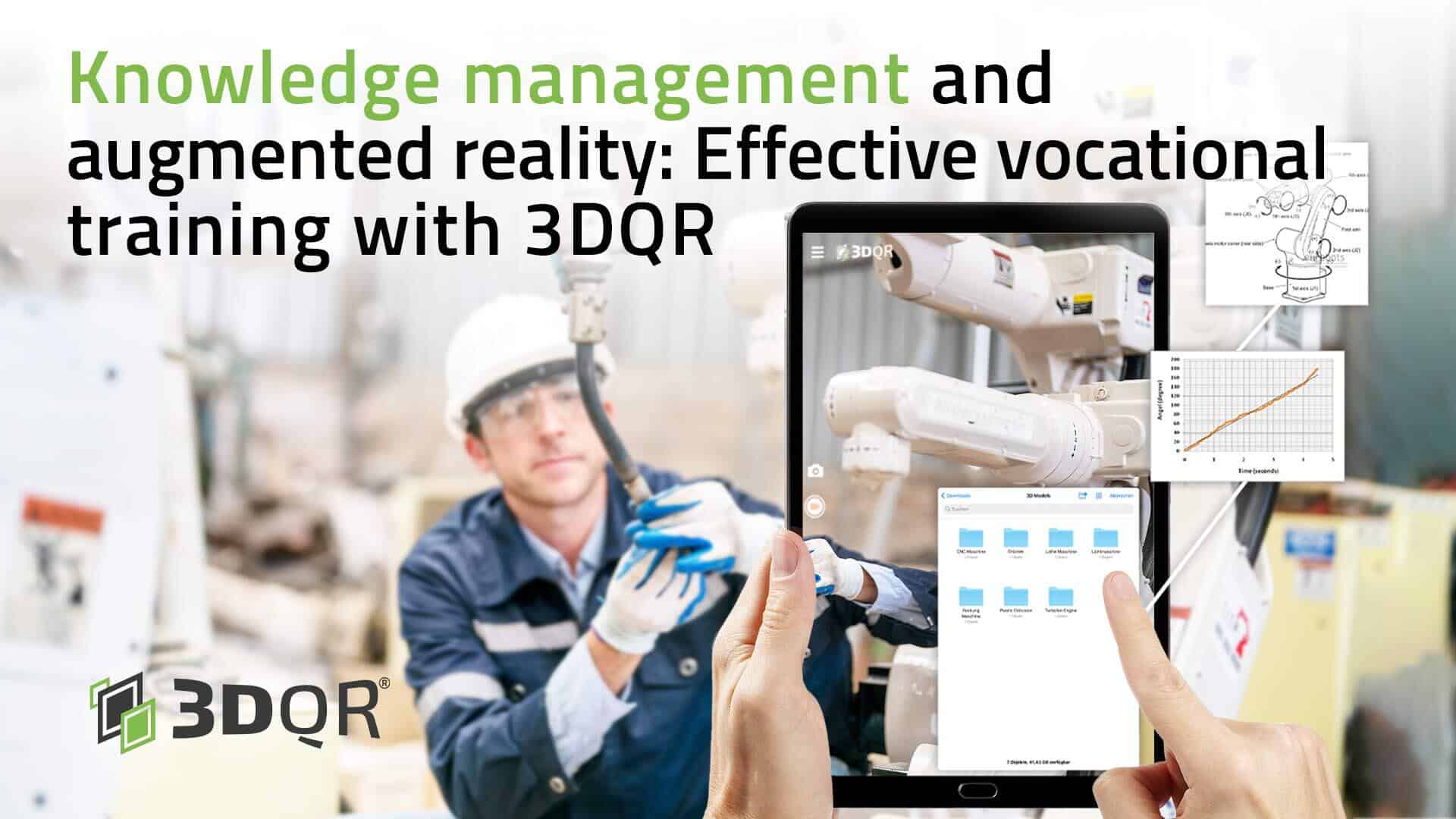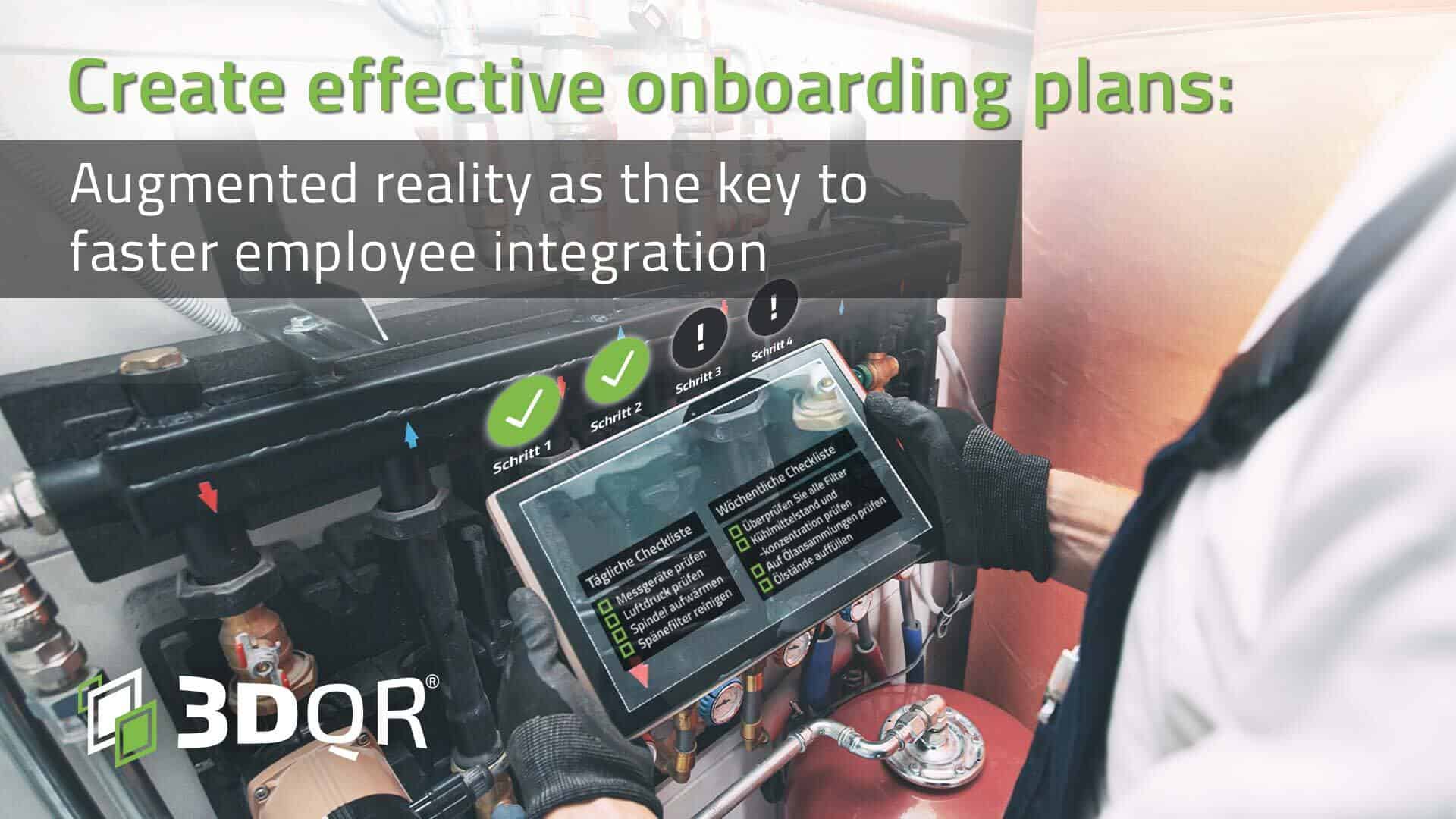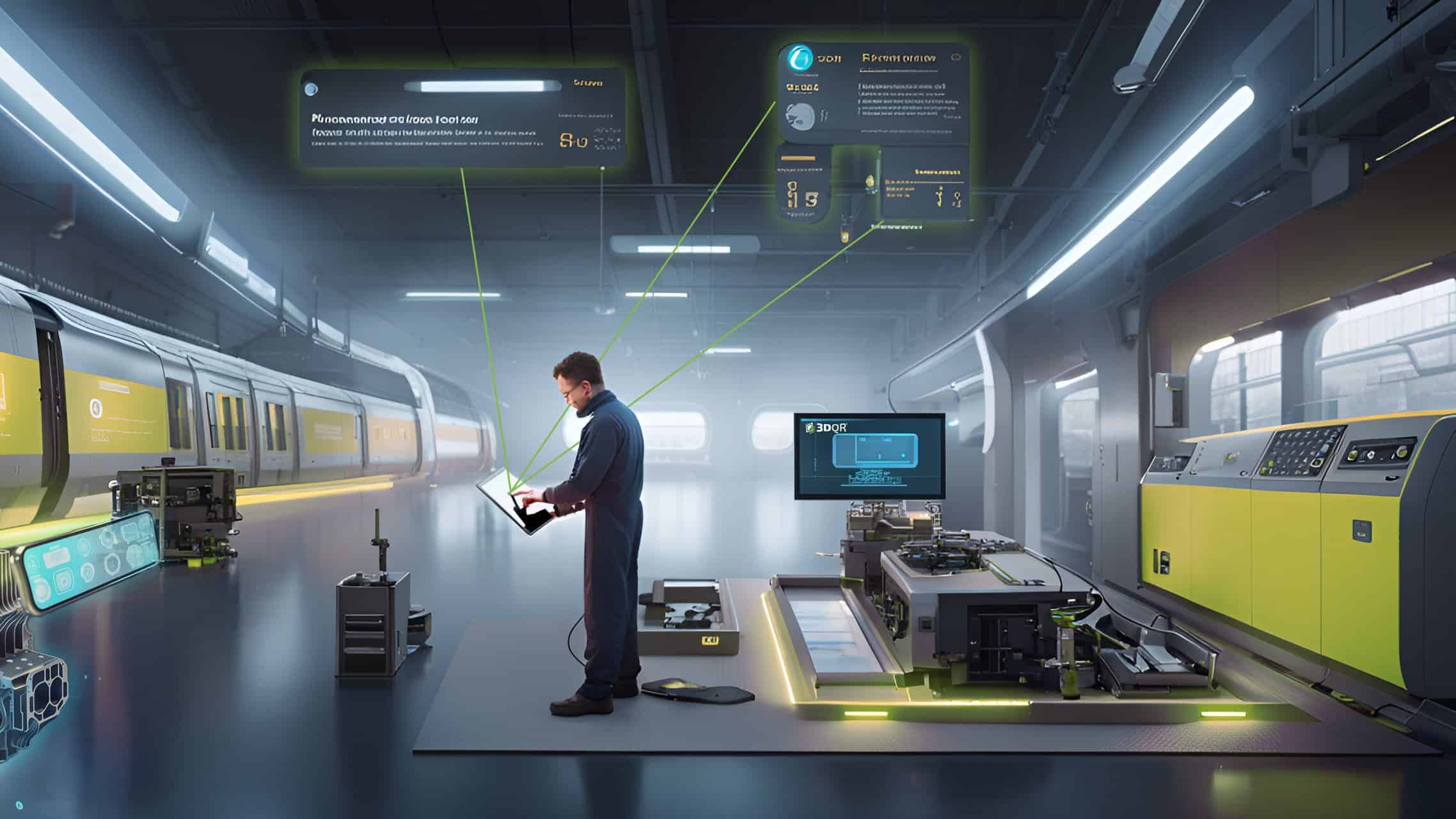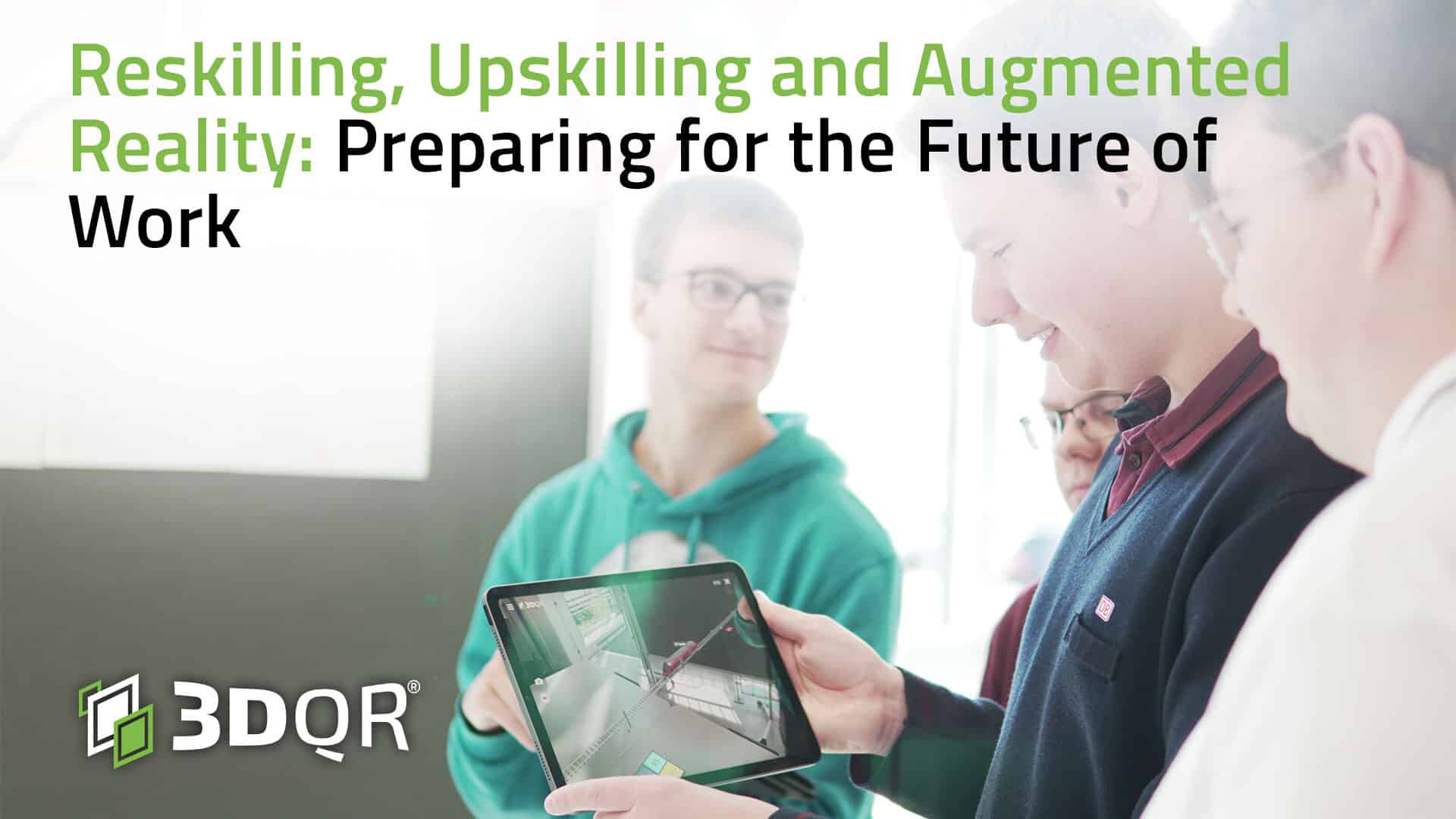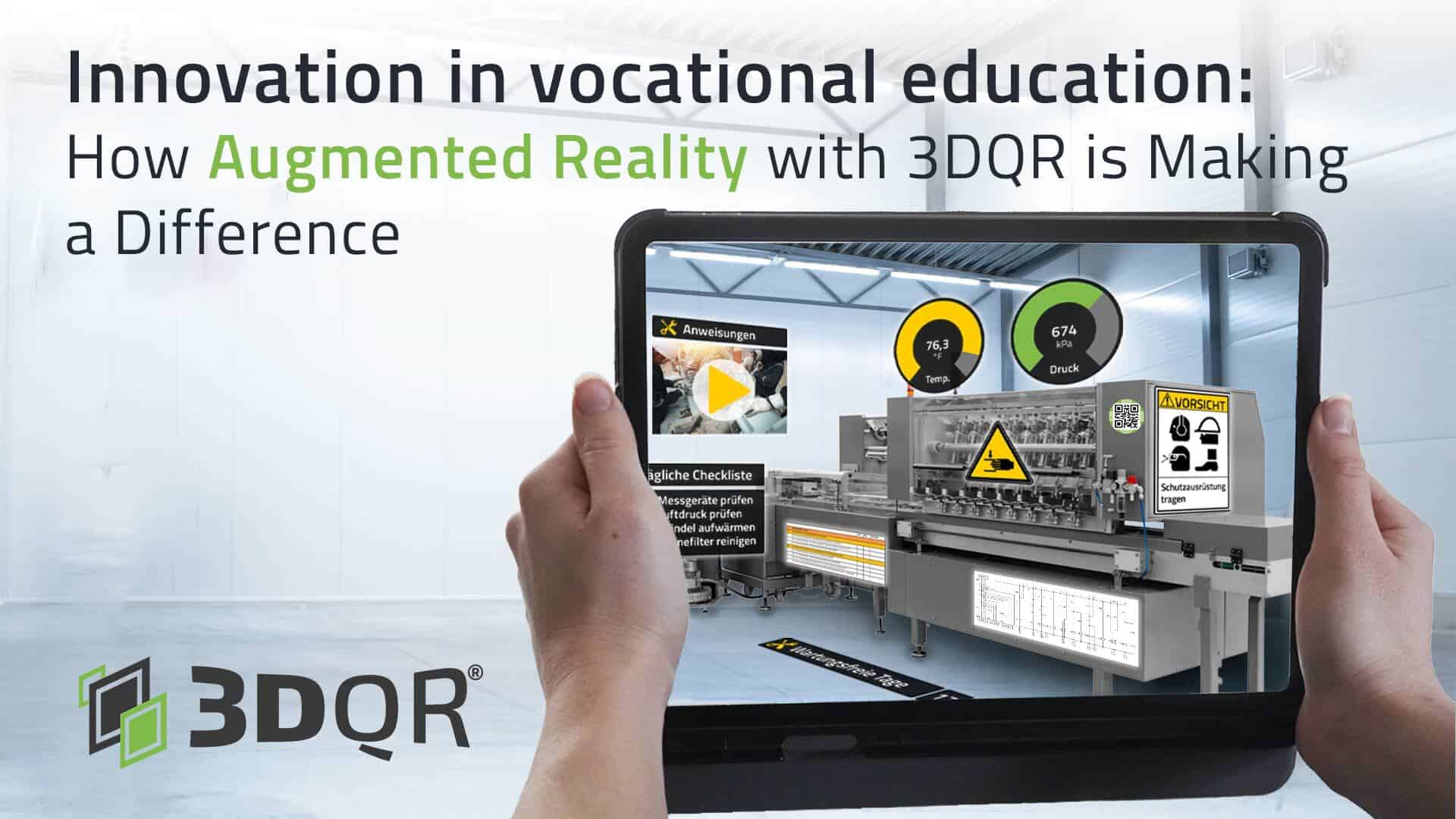Inhaltsverzeichnis
Innovation in vocational education is necessary as the world we live in is changing at a rapid pace. The digital transformation, driven by the use of technologies such as artificial intelligence, the Internet of Things, Big Data, and Augmented Reality – affects almost every aspect of our lives, including the way we work and learn.
In this context, innovation in vocational education is crucial. It is the link between education and the working world and enables people to acquire the skills and competencies they need to be successful in a constantly changing work environment. Given the rapid technological advancement, it is essential that vocational education is also innovative and future-oriented.
This is where 3DQR comes in. As a leading provider of Augmented Reality (AR) solutions, 3DQR has made it its mission to drive digital transformation in vocational education. By integrating AR into training and learning processes, 3DQR enables an interactive learning experience tailored to the needs of today’s digital generation.
In this blog post, we will discuss how digital transformation is changing the landscape of vocational education, the challenges it brings, and how technology-supported learning – particularly Augmented Reality – can help meet these challenges and make vocational education more effective and relevant.
Challenges and Innovations in Vocational Education: The Role of Technology
Vocational education today faces a number of challenges arising from rapid technological change and the evolving requirements of the job market. Some of these challenges are:
Adapting to new technologies: The introduction of new technologies in various sectors requires a constant update of curricula and learning materials to ensure that training remains relevant and up to date. This not only requires investments in new technologies but also the continuous further training of teaching and training staff.
Skills shortage: Many industries are experiencing an increasing shortage of skilled workers. To counteract this shortage, it is necessary to increase the attractiveness of vocational education to inspire more people for these professions. This primarily involves appealing and contemporary presentation.
Individual learning needs: Each learner has different prior knowledge, abilities, and learning styles. One of the biggest challenges for vocational education is to respond to these individual differences and provide flexible, tailor-made learning opportunities that meet the needs of each individual.
Time and resource management: Vocational education institutions often have to make do with limited financial and personnel resources. Therefore, it is important to develop efficient teaching and learning methods that extract the maximum benefit from the available resources. Moreover, when it comes to digital topics, simple no-code solutions are always the best solution, as not every task requires hiring a programmer.
Advantages of Technology-Supported Learning in Vocational Education
Innovations in vocational education, particularly the use of augmented reality, can significantly enhance the effectiveness of vocational education. Some of the key benefits include:
Improved Learning Outcomes: Technology-assisted learning methods such as AR can improve learning outcomes by illustrating theoretical concepts through interactive experiences. This facilitates understanding and application of the learned in practice.
Increased Motivation and Engagement: The use of technologies like AR can make learning more attractive and thus increase the motivation of the learners. This, in turn, can lead to better learning outcomes and greater satisfaction.
Flexibility and Accessibility: Technology-supported learning allows learners to learn at their own pace and on their own schedule. Moreover, learning materials and resources can be made accessible anytime and anywhere, making learning more flexible and accessible.
Individualized Learning: Technologies such as AR can help create individual learning pathways tailored to the specific needs, abilities, and interests of each learner. This enables personalized learning that improves learning outcomes and increases learner satisfaction.
Cost Efficiency: By reducing the need for physical resources and the ability to quickly and easily update and distribute learning content, technology-assisted learning can help reduce the cost of vocational education.
Promotion of Digital Skills: Through the use of technologies in the learning process, learners acquire not only job-specific knowledge and skills but also important digital competencies that are increasingly in demand in the modern workplace.
Overall, technology-supported learning in vocational education offers a range of benefits that can help improve the quality and relevance of vocational education and adapt it to the requirements of the 21st century.
Innovation in Vocational Education through Augmented Reality: How 3DQR Makes a Difference
Augmented Reality (AR) offers great potential for innovation in vocational education, and 3DQR’s technology plays a key role in this. Here are some of the main reasons why 3DQR makes a difference in integrating AR into vocational education:
3DQR Studio: The 3DQR Studio is a powerful tool that allows educational providers and companies to easily create custom AR experiences. Users can upload 3D models, animations, and interactive elements and link them to QR codes that can then be placed on real objects or in learning materials. By scanning the QR codes with their smartphone or tablet, learners can have immersive AR experiences that illustrate and enrich learning. The 3DQR Studio is intuitive to use and requires no programming skills, making it an ideal tool for creating AR content in vocational education.
In-App Creator: 3DQR’s In-App Creator goes a step further, allowing users to create and customize AR content directly on their mobile device. The 3DQR Studio and 3DQR In-App Creator are understood as a symbiosis. While the studio serves the administration, the In-App Creator is the creative part. With a few simple steps, interactive instructions, tutorials, and hints can be created that can be improved and adapted at any time. With the In-App Creator, learners can take their learning into their own hands and design AR experiences tailored to their specific learning objectives and interests.
Conclusion: Technology as a Support, Not an Obstacle in Vocational Education
In summary, 3DQR, with the Studio and the In-App Creator, offers two powerful tools that make the use of AR in vocational education not only effective but also simple and accessible. These tools enable educational providers and businesses to fully exploit the benefits of AR and provide an interactive, personalized, and engaging learning experience.
Innovation in vocational education, driven by digital transformation, is not only inevitable but also a crucial step to improve the quality of training and meet the demands of the 21st century. Technologies such as Augmented Reality offer enormous opportunities to enrich the learning experience and make the learning process more engaging.
However, it is important to emphasize that technology should be seen as a support, not an obstacle. This means that it is not intended to complicate or replace existing educational practices, but to complement and enhance them. The technology is meant to facilitate and enrich the learning process, not complicate it.
In this sense, 3DQR’s AR solutions are designed to make the integration of AR into vocational education as simple and accessible as possible. With tools like the 3DQR Studio and the In-App Creator, educational providers and businesses can create AR experiences tailored to their specific learning objectives and requirements, without the need for programming skills (no-code).
It’s time to tap into the full potential of Augmented Reality for your vocational training and education. Are you ready to take the next step and change the learning experience of your learners? Contact us today and discover how 3DQR can help you achieve your training goals. Our experts are ready to answer your questions and accompany you on your journey into the future of vocational education.

